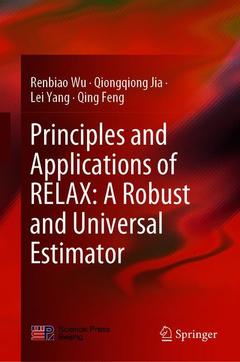Description
Principles and Applications of RELAX: A Robust and Universal Estimator, 1st ed. 2019
Language: English
Support: Print on demand
Description
/li>Contents
/li>Biography
/li>Comment
/li>
Renbiao Wu is the Tianjin Professor and the Director of the Tianjin Key Lab for Advanced Signal Processing at the Civil Aviation University of China. He received his B.Sc. and M.Sc. in Electrical Engineering from the Northwest Polytechnic University in 1988 and 1991 respectively, and his Ph.D. in Electrical Engineering from Xidian University in 1994. He has worked at the Imperial College of London, the University of Florida, and Virginia Tech as a Distinguished Research Scholar, Visiting Professor, and Postdoctoral Fellow for 5 years. His research interests include adaptive array signal processing and spectral estimation, especially in regards to their applications in GNSS and radar. He has published over 300 peer-reviewed papers, and ten plus books and book chapters. He is the recipient of the Chinese National Outstanding Young Investigator Award in 2003.
Qiongqiong Jia is a lecturer of the Tianjin Key Lab for Advanced Signal Processing at the Civil Aviation University of China. She received her B.Sc. and M.Sc. from the Civil Aviation University of China in 2008 and 2011, and her specialized master degree in navigation engineering from ENAC in France in 2015. Her research interests include adaptive array signal processing and spectral estimation regarding their applications to GNSS. She has published 20 papers, and co-authored three books and book chapters.
Lei Yang is currently an associate professor of Tianjin Key Lab for Advanced Signal Processing at Civil Aviation University of China. He received his B. Sc. and Ph. D. degrees all from Xidian University, Xi'an, China in Electronic Engineering and Signal and Information Processing, respectively. He has worked at School of Eletrical and Electronic Engineering of Nanyang Technology University (NTU), Singapore and Temasek Lab@NTU, Singapore, as a full-time (postdoctoral) research fellow and research scientist, respectively, for 4 years. His research interests include radar imaging for stationary




